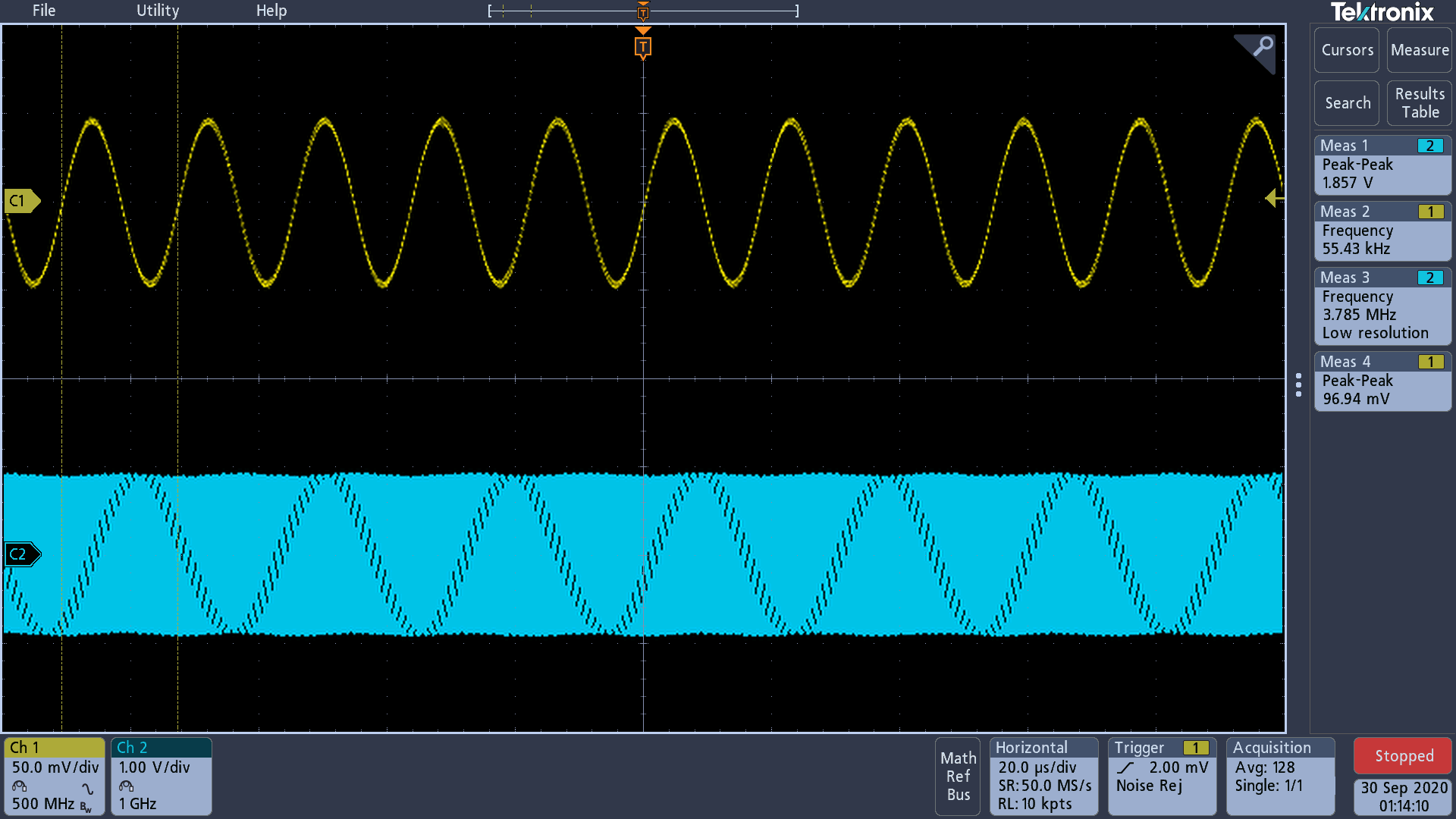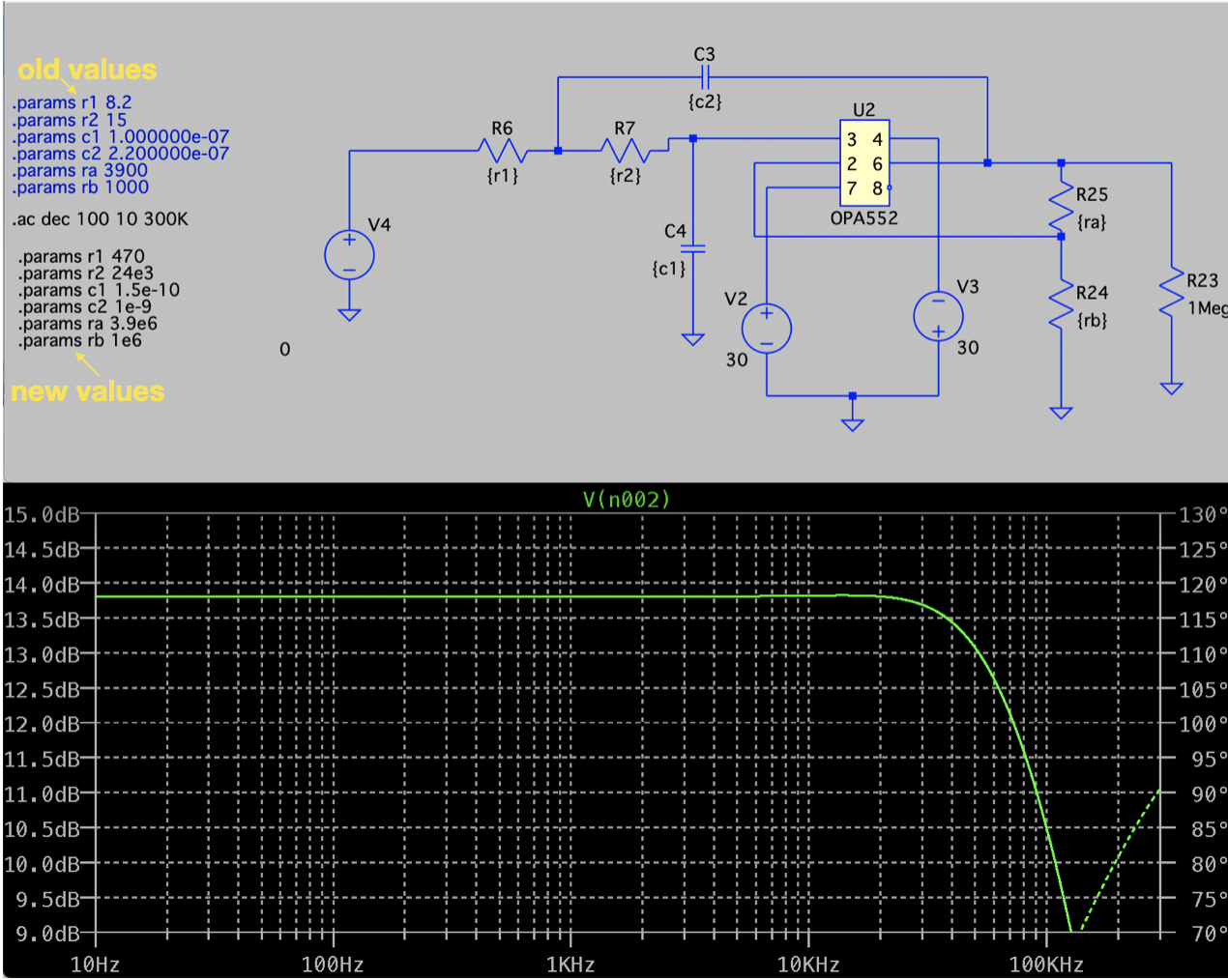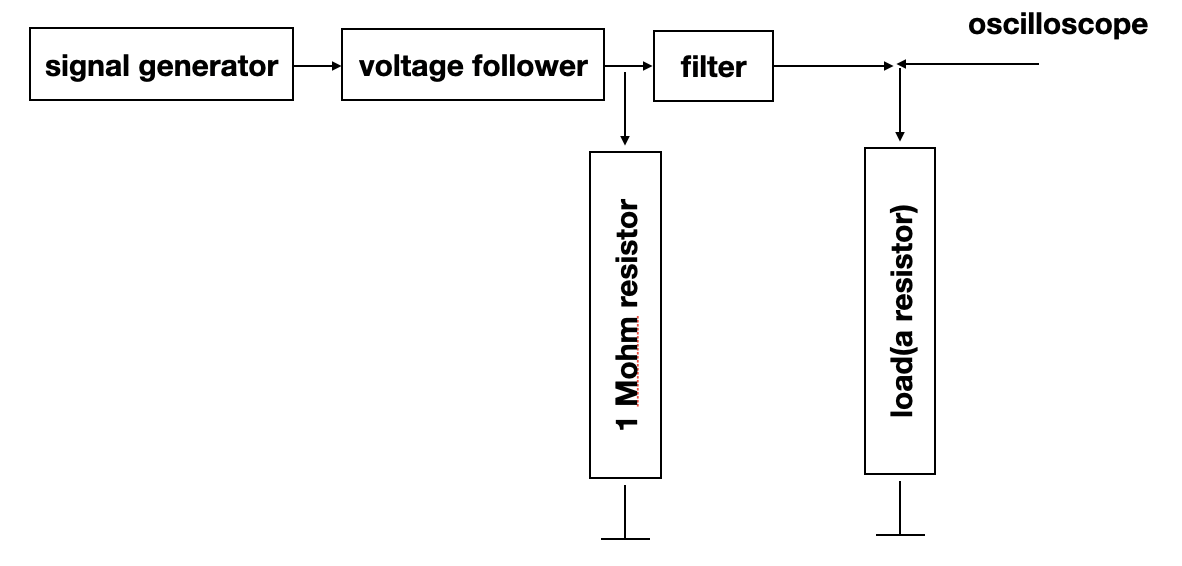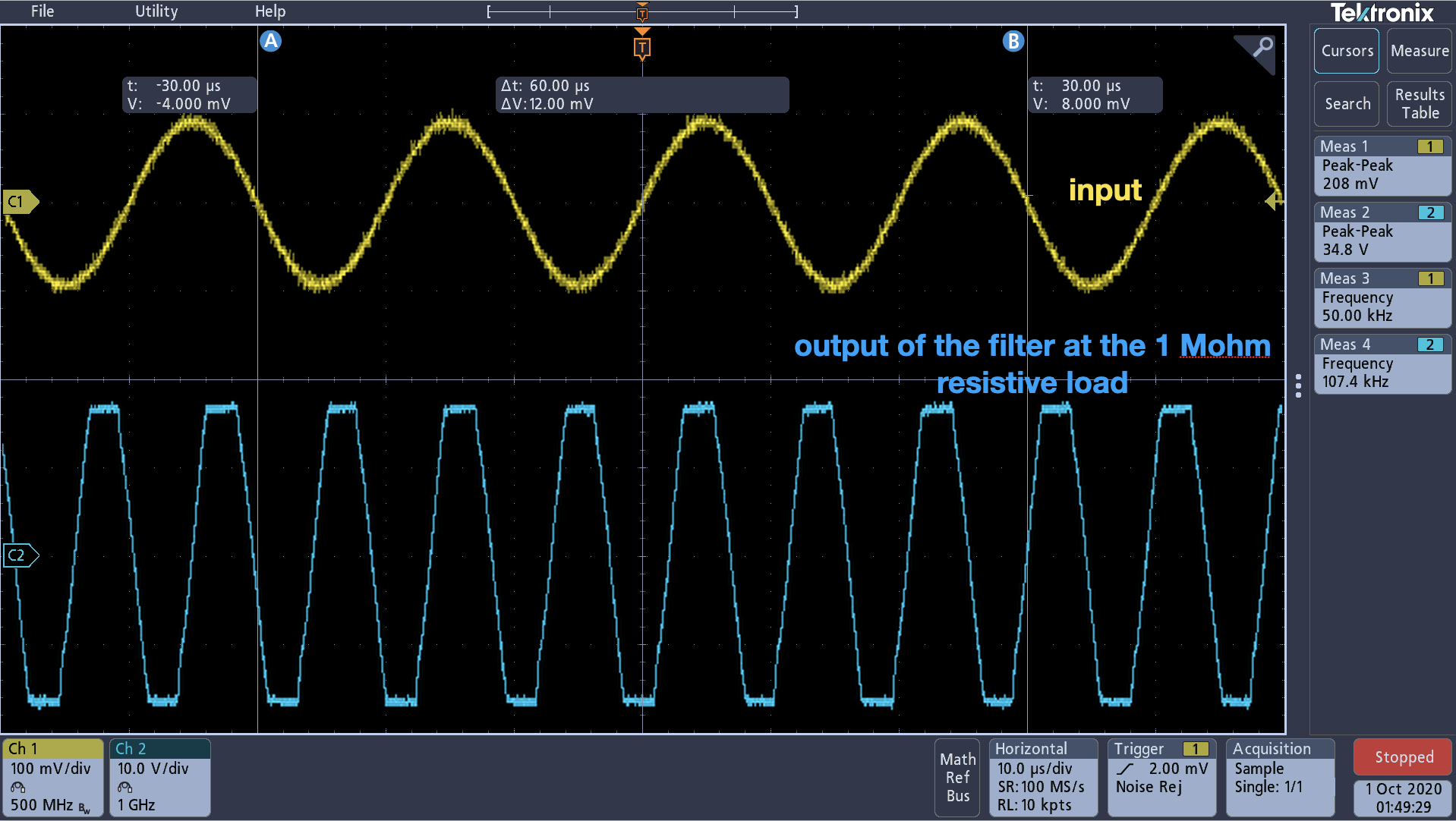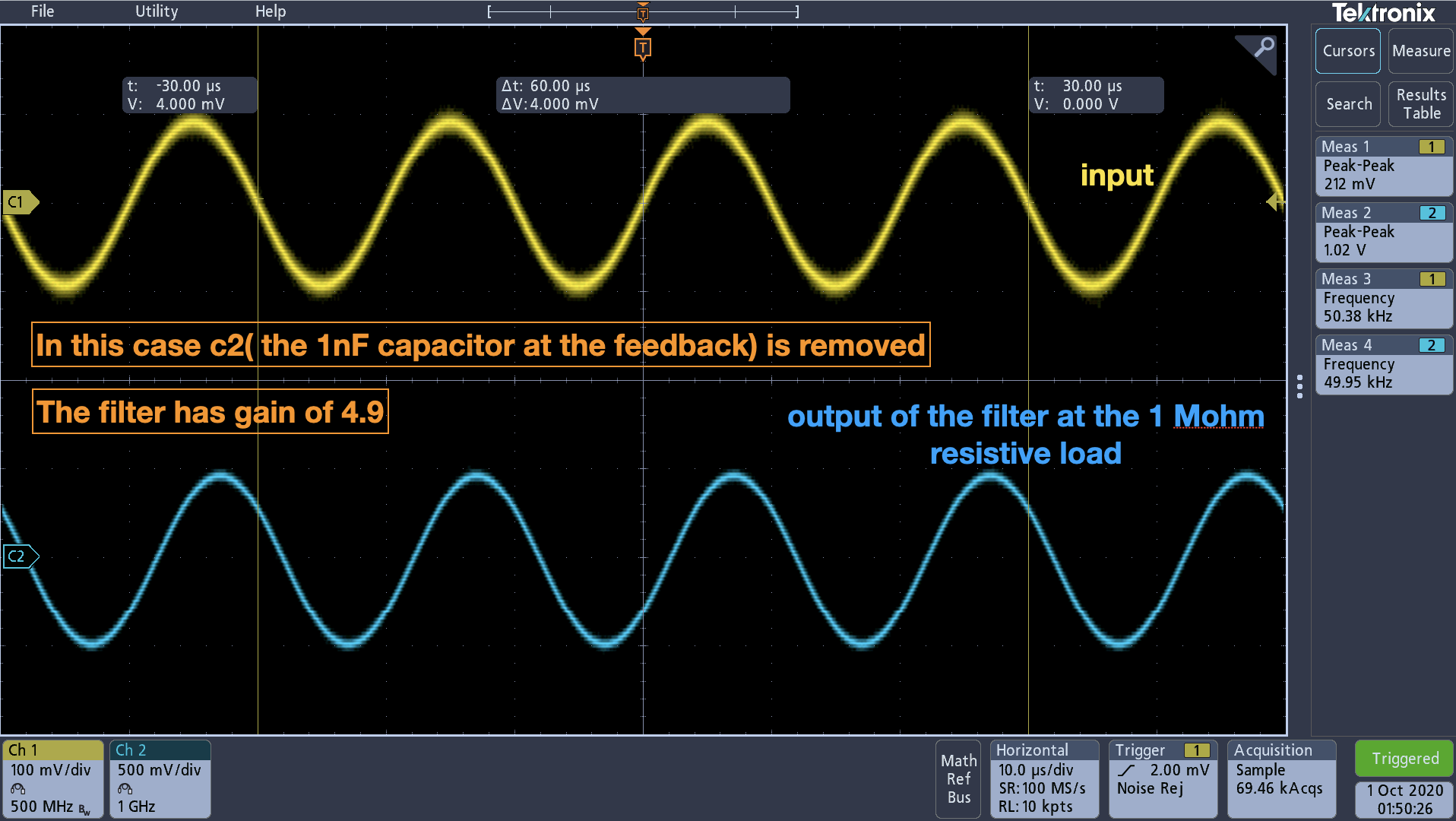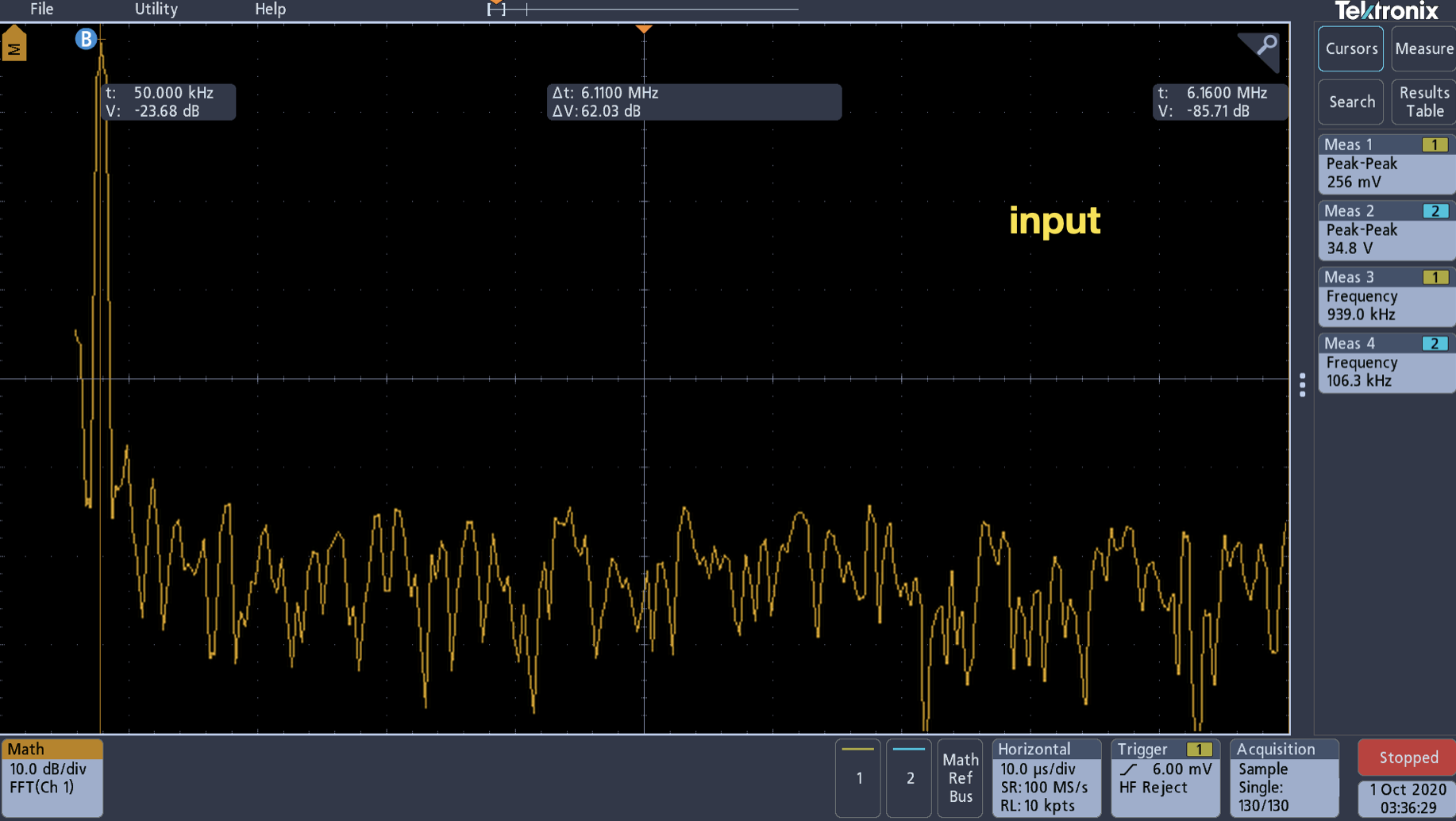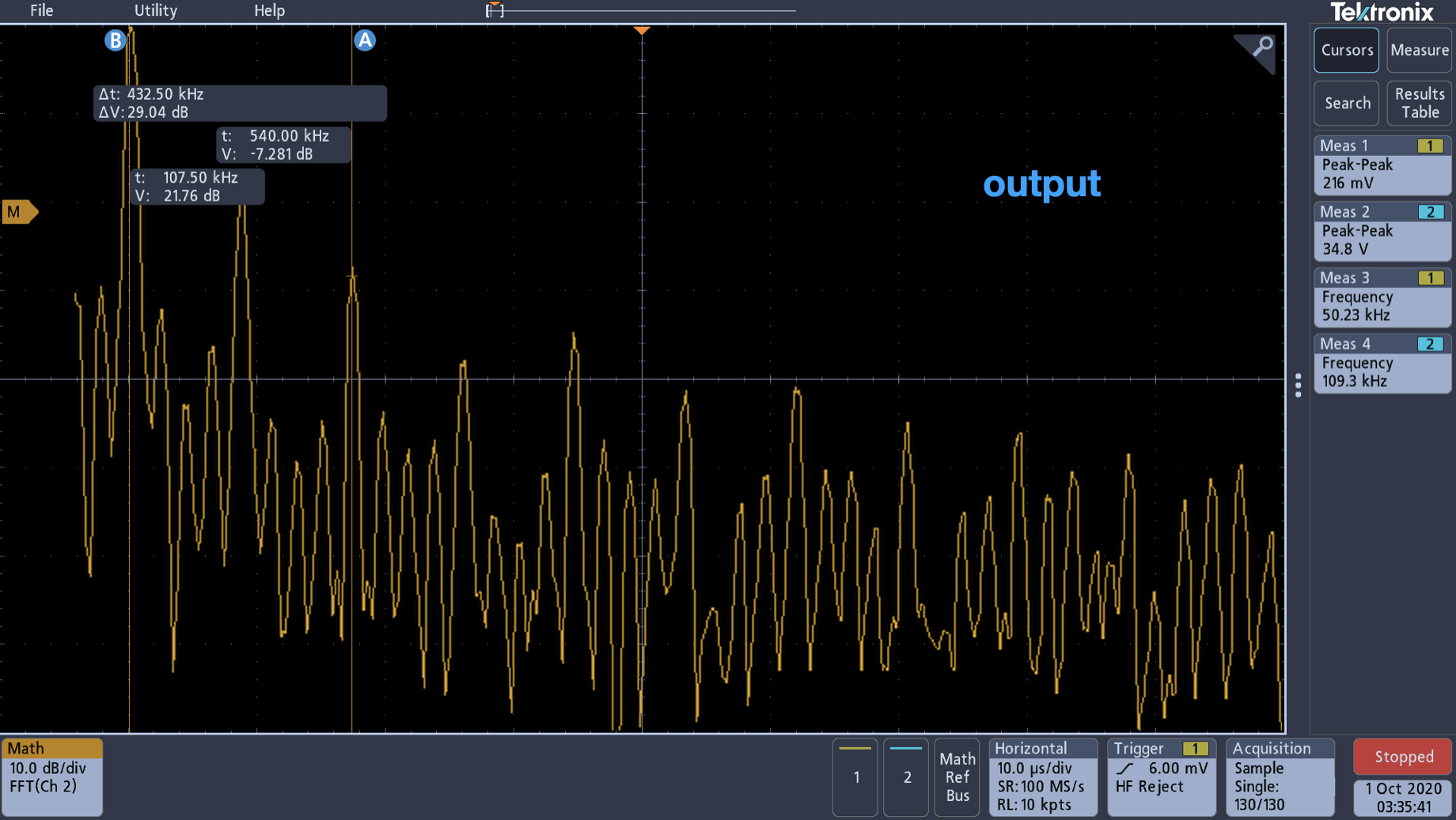Other Parts Discussed in Thread: TINA-TI, OPA551, OPA683
Hello,
I am using OPA552 to make a 2nd order sallen key low pass filter. The LTSpice simulation shows stable results, however after implementing the hardware the output shows a high frequency noise. I am attaching the oscilloscope output where the yellow graph is the input and the blue graph is the output. The target cut-off frequency is 100 KHz, and the gain is around 5. I tried a higher load, around 1 Mohm and observed the same results. Also, the IC works fine as an amplifier (without filtering).
I was wondering if you could comment on how I can solve this issue. Thank you.



